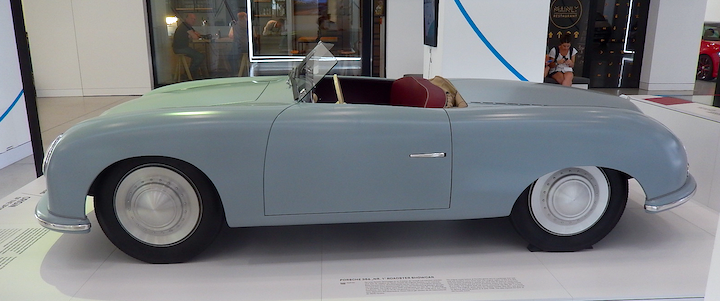Setting aside mechanical and engineering considerations, let's focus on the Corvette's fenderline. From today's perspective, it seems unexceptional. But in the context of sports car styling around 1952 when the Corvette was designed, its fenderline theme was uncommon.
Below are examples of fenderlines Corvette stylists would have been aware of when designing the car.
1953 Chevrolet Corvette
First-generation Corvettes were attractive. My main quibble is the chromed shape behind the front wheel opening. Note the flowing fenderline. In the early 1950s, most European sports cars were either warmed-over prewar designs or else often had straight-flow slab-side fenders if their bodies were made by Italian coachbuilders. A fairly common alternative was a flow-though front fender with a sketched, attached rear fender.
1948 Jaguar XK120
An exception was the Jaguar XK120 that had a flowing fender design far more exaggerated than the Corvette's.
1950 Cisitalia 202 by Pinin Farina
This classic design was influential, and the fenderline has a flow that's caused by the grafted rear fender shape. As mentioned, most Italian sports car designs from the early 1950s featured a one-piece slab fender. (My photo, taken at the Revs Institute in Naples, Florida in 2017.)
1952 C-Type Jaguar - Bonhams auction photo
Racing Jaguars featured fender flows less extreme than on the XK120s. Corvette stylists must have known of this design that first appeared in 1951.
1951 Ferrari 340 America Spyder by Vignale
Another 1951 design with a flow at the rear fender position. Not much different than the '53 Corvette, though General Motors stylists might not have been aware of this car.
1951 Nash-Healey
Also similar to the later Corvette was this Nash-Healy whose body might have been styled in England.
1951 Buick Special - Mecum auction photo
General Motors itself had that kind of fenderline flow on its 1951 B-body cars. Harley Earl wisely had the fenderline dropped below the beltline as a means of avoiding a bulky, slab-side appearance.

















































